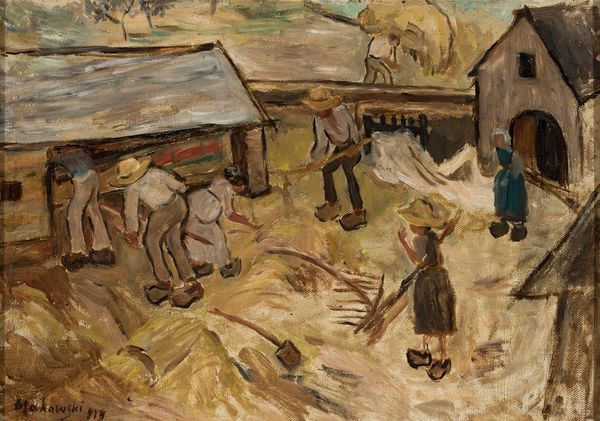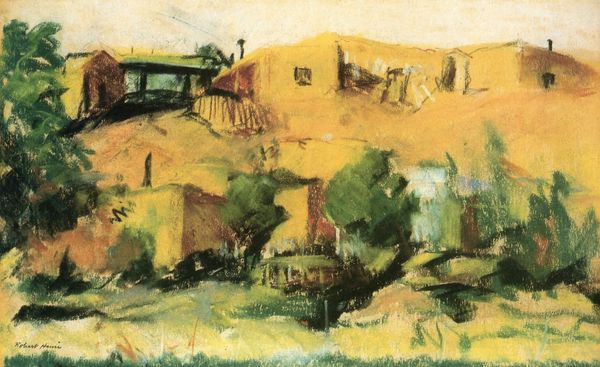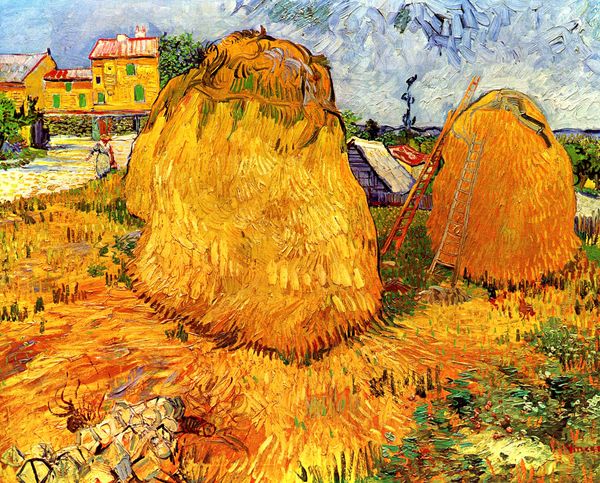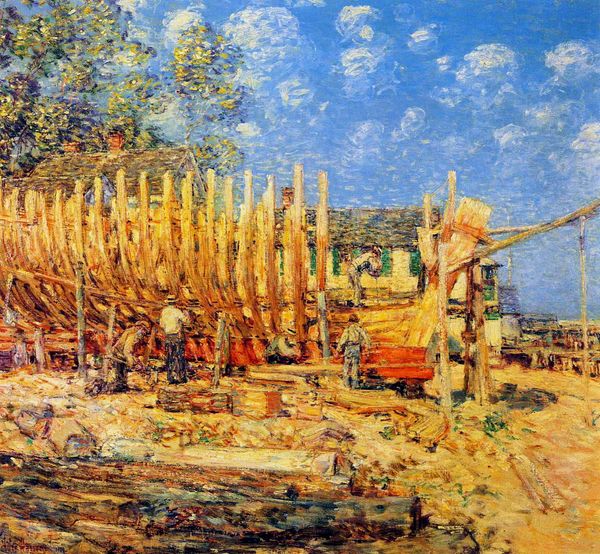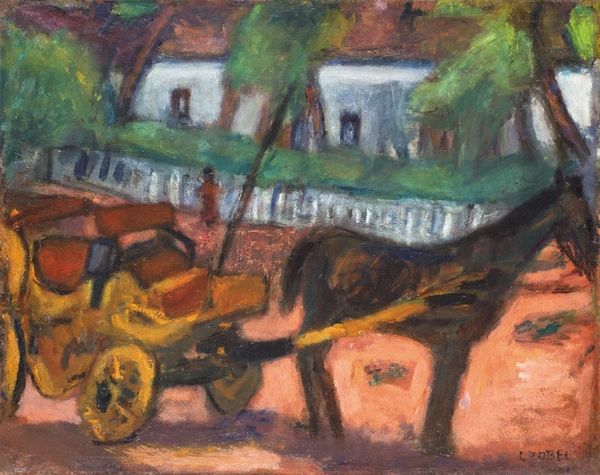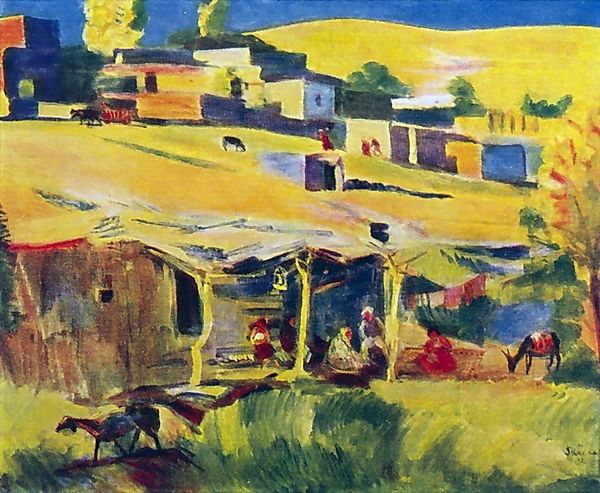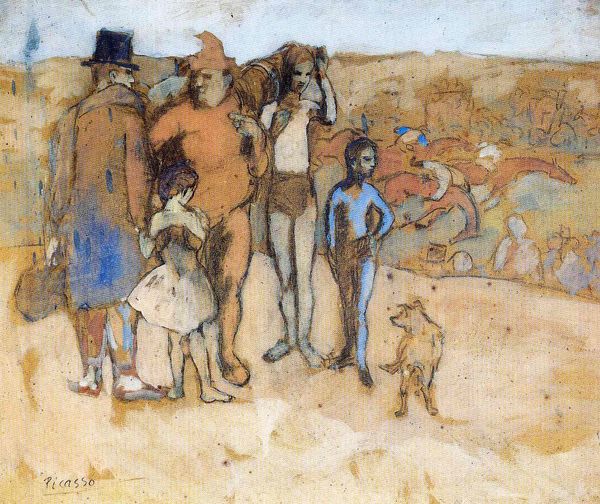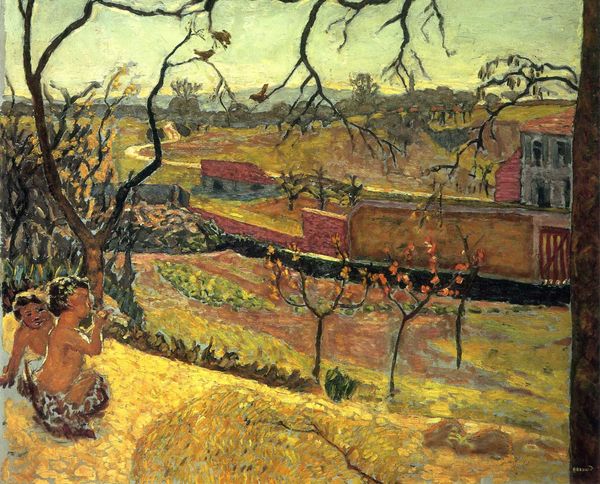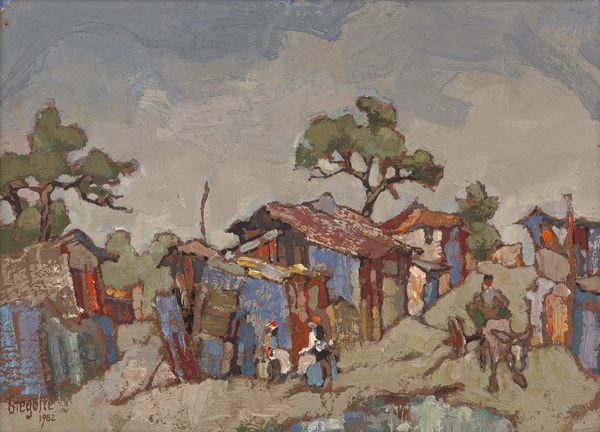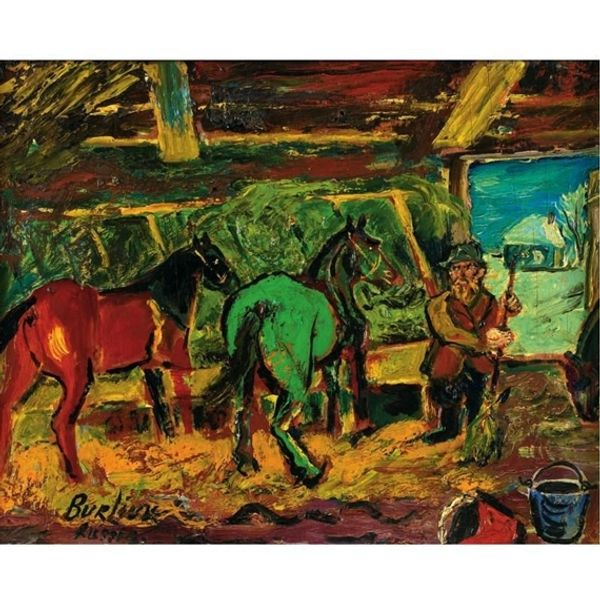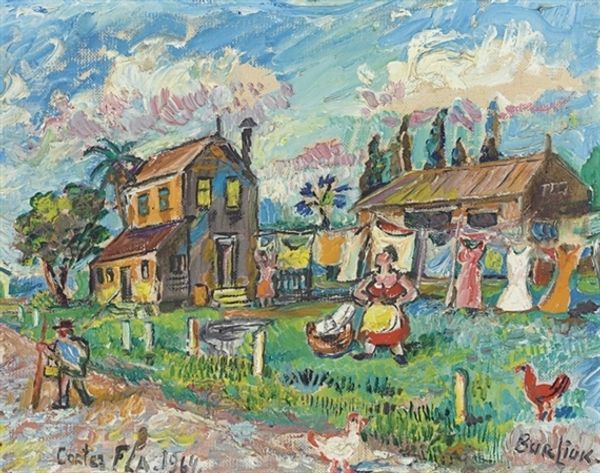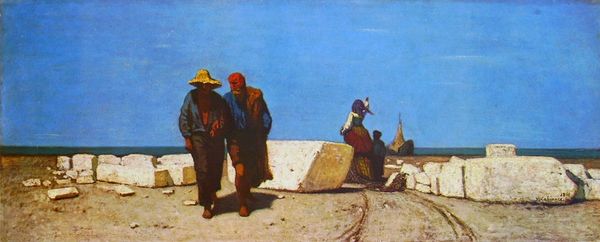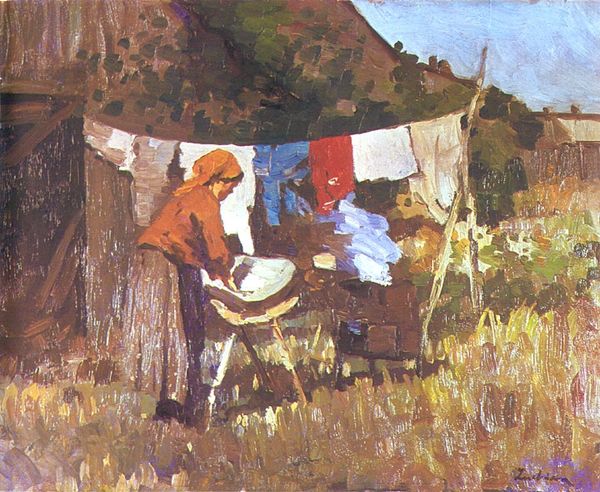
painting, oil-paint
#
animal
#
painting
#
impressionism
#
oil-paint
#
landscape
#
genre-painting
Dimensions: 45 x 51 cm
Copyright: Public domain
Editor: Here we have Van Gogh's "Encampment of Gypsies with Caravans" from 1888, made with oil paint. I'm struck by how thick the paint is, you can really see the brushstrokes. It feels almost like he's sculpting the scene rather than just painting it. What stands out to you in terms of how this piece was made? Curator: What interests me is the very act of depicting this transient community through the medium of paint. Think about the labour involved: Van Gogh painstakingly recreating a nomadic existence using fixed, manufactured materials – canvas stretched over a frame, ground pigments bound with oil. There's a real tension between the subject matter and the method. Editor: That’s fascinating. It almost seems contradictory to use such deliberate and permanent materials to portray something so fleeting. Do you think the social context of the time had an influence? Curator: Absolutely. Consider the growing industrialization of Europe. Van Gogh, like many artists of his time, was witnessing the shift away from traditional ways of life. By focusing on a group like the Romani people, he's engaging with ideas of labor, production, and even resistance to that industrial machine. Look at how he renders the caravans – they’re almost like hand-crafted alternatives to the factories springing up everywhere. Editor: So, you're saying that the materials and the way he used them are not just aesthetic choices but also a commentary on the social and economic landscape? Curator: Precisely. The impasto technique – that thick application of paint – can be seen as an act of labour itself, mirroring the physical work inherent in the Romani’s lifestyle, offering an alternative to mass production. What do you make of the repetitive brushstrokes and their relationship to ideas about the “hand-made”? Editor: That connection makes so much sense. I hadn’t considered the sheer physicality of the painting process in relation to the subject. Now I’m thinking about what is ‘valuable’ and the status of making versus mass production, then and now. Curator: It's all about shifting our focus from simply *what* is depicted, to *how* and *why* it’s made, and how that reflects the social and material conditions of its time. This changes how we approach art entirely.
Comments
No comments
Be the first to comment and join the conversation on the ultimate creative platform.
